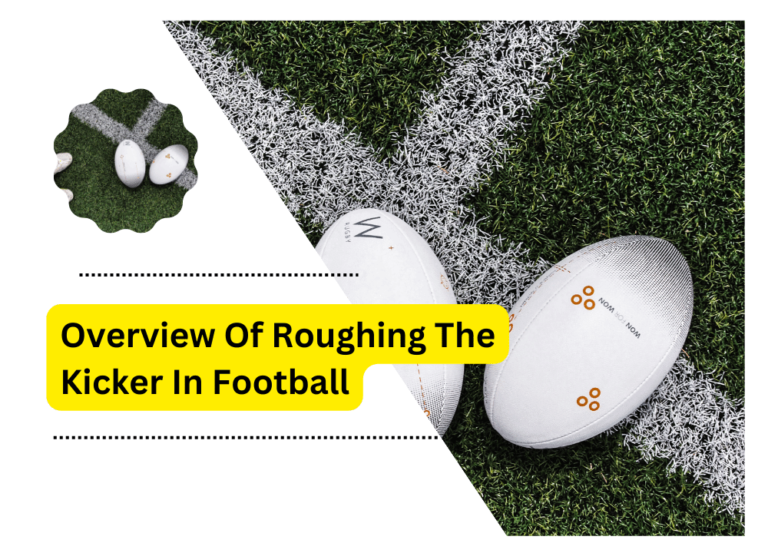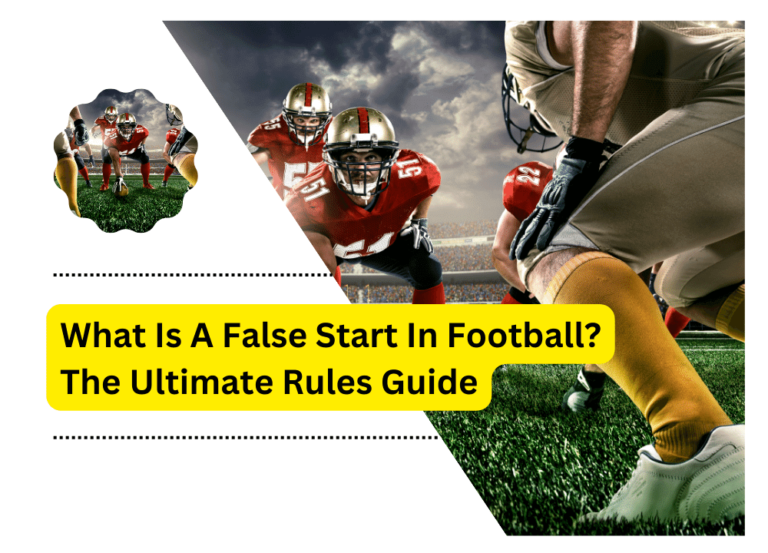What Is An Eligible Receiver In Football?

An eligible receiver in football is a player who can catch a forward pass during a play. The NFL and affiliated organizations establish eligibility rules for receivers. To succeed, eligible receivers must have qualities such as speed and agility. Game awareness is also crucial.
This article will outline the criteria that qualify a player to receive passes. It will also explore how teams use receivers’ in-game strategies.
Receiving Eligibility Requirements
For a player to be eligible to receive passes. They must meet specific requirements by the NFL or other associated league organizations. These requirements vary depending on which level of football is being played but generally include:
- Being on the offensive side of the ball
- Not being an offensive lineman or a fullback
- Having both feet in bounds before making a catch
- Have at least three steps before catching the pass (in college football).
Positioning and Strategies for Eligible Receivers
Inoffensive play, teams can position eligible receivers in various ways. Some common strategies include breaking the field into three main sections:
1. deep
2. mid-range
3. short
A team’s receivers can line up either side of this section. Or spread out across the field to create passing opportunities.
The positioning of eligible receivers is an integral part of developing an offensive strategy. Coaches often use certain players in specific roles to create mismatches in the defensive coverage and open up passing lanes. For example, a receiver may line up on the left side of the field and then break off towards the middle, while another receiver will go deep downfield.
Catching Passes
Once an eligible receiver has positioned themselves. They must catch the pass thrown to them. This requires good hand-eye coordination and timing and adjusting their body to make the catch. Reading the ball’s trajectory and positioning will also help a receiver make a successful catch.
An interception of the ball results in an incomplete pass and scores no points. As such, receivers need to be aware of their surroundings and look out for any potential defenders who may try to break up a pass or intercept the ball.
How many eligible receivers in football?
The number of eligible receivers in a football game depends on the formation chosen by the offense. In most cases, five eligible receivers are in the backfield, with one quarterback and four offensive linemen. Yet, teams can choose a variety of formations, including three-receiver sets. Or any other combination that meets the NFL’s eligibility requirements.
Ineligible receiver penalty
Using an ineligible receiver in the offense will result in a penalty for a rule violation. This is most common when an offensive lineman moves into an eligible position before throwing the ball. Depending on the severity of the infraction, penalties may range from five to 15 yards and potential loss of downs.
This concludes our overview of eligible receivers in football. With the proper knowledge and strategies, coaches can use eligible receivers to gain an advantage during a game. With appropriate coaching and dedication from players, these receivers can be vital to any team’s offense.
How Eligible Receivers Can Impact Team Offense
Eligible receivers are essential to any team’s offensive success by utilizing the skills of speed, agility, and game awareness. These receivers can create mismatches in defensive coverage. And provide a reliable target for quarterbacks to throw to.
When used, eligible receivers can be integral to any team’s strategy, giving them a competitive advantage over their opponents.
Developing Receiving Skills
Teams must develop their skills in practice and during games to make the most out of their eligible receivers. This includes teaching them the fundamentals of catching, such as positioning and tracking the ball while in flight. Players should also work on their agility and speed to help them move around the field if needed.
Coaches should develop strategies to use eligible receivers’ specialties. For example, if a team has tall receivers, the coach may want to focus on plays involving deep passes. And using the receiver’s height by focusing on plays highlighting their players’ strengths. Teams can maximize their offensive potential and make the most of their eligible receivers.
An eligible receiver in football is an integral part of any game plan. Teams should focus on developing their players’ receiving skills. And utilizing their positioning strategies to create opportunities for successful plays. With the proper process and practice, any team can use eligible receivers on the field to help them achieve victory.
FAQs
A: The exact number of eligible receivers depends on which level of football is being played. In the NFL, teams can have up to 11 players from their offense who can receive passes in any game.
A: The penalty for this is “illegal formation,” which results in a five-yard loss for the offense. Furthermore, the officials will rule it as an incomplete pass if the quarterback throws to an ineligible receiver. Identifying all eligible receivers before each offensive play is essential.
A: Yes, the player must also wear a jersey number within the range of 1-49 or 80-89. Players with numbers outside these ranges are ineligible receivers. Additionally, each team must have at least seven offensive players lined up on the line of scrimmage when running a foul play. This ensures the defense has a fair chance at stopping the offense from scoring.
A: Defensive players are not allowed to contact an eligible receiver until after five yards of the line of scrimmage.
A: Coaches often use certain players to create mismatches in the defensive coverage and open up passing lanes.
Final Thought
An eligible receiver in football is an essential asset to any team. They must meet specific requirements and be able to position themselves on the field to create passing opportunities. With good hand-eye coordination, timing, and awareness of their surroundings, a team’s receivers can be a valuable part of their offensive strategy. By developing their skills and utilizing their specialties, teams can maximize their offensive potential and increase their chances of success.
Strategies for eligible receivers may vary by football level, but consistent principles apply. Coaches and players must understand these rules to exploit them during games. With dedication and practice, any team can better use eligible receivers in their game plans for a greater chance of success.






